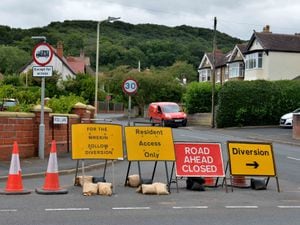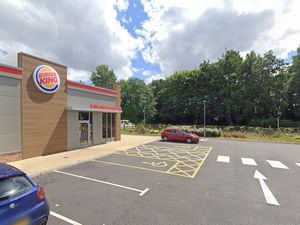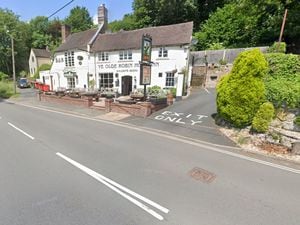Wrekin one-way system to stay in place until February
A one-way system and other measures brought in to tackle “unsafe” traffic and parking at a beauty spot will stay in place until February, but could be “tweaked” as they go along.

Telford & Wrekin Council highways group manager Adam Brookes said the experimental order around the Wrekin was introduced in August, to replace emergency measures implemented three months earlier, and will run for its full six-month term.
He told Wellington town councillors this would maximise residents’, visitors’ and other parties’ chance to reply to the associated consultation, and said £50,000 was available for the permanent scheme that could result from it.
Councillor Dorothy Roberts praised new parking regulations, but Councillor Miles Hosken said some drivers were breaking the law by crossing double-yellow lines to park beyond them.
Councillor Lee Carter, who is also a Telford & Wrekin Council cabinet member, said the authority was talking to landowners and hoped to “unlock parking capacity” around the hill.
Mr Brooks told Wellington Town Council’s Policy and Resources Committee: “You will recall a bank holiday a few months ago we found ourselves with a situation around the Wrekin where traffic conditions were what I would deem unsafe, so we had to implement emergency measures to try to control that.
“When the temporary one-way systems were first implemented, there were traffic management operatives controlling those closures. However, it was not sustainable to keep those, so we left the system in place but it was managing by itself.
“Over time the benefit seemed to tail off because the cones, in place to help try and control the issue, were being moved.
“There was inconsiderate parking and incidents at the Wrekin where emergency services were required and it was a challenge for them.
Robust
“So we looked at what we could do to continue the temporary measures but make them a bit more robust. That, fundamentally, is what you see on site at the moment.”
He said consultation responses that had been received so far were a “mixed bag”, with strong views for and against, and the department would try to find a solution that balanced road user safety with the free flow of traffic.
“We will try to run that for a six-month period to give it a chance to bed in and for people to really understand the benefits and disadvantages and for us to listen to what is being said so we can make tweaks to that system,” he said.
“The experimental nature allows us to do that.”
Councillor Roberts said the borough council had done a “really good job” on parking, but added: “The one-way system has increased the vehicle numbers and speed and the cycle lane has narrowed the road. As a result, walkers don’t know where they should be and, currently, are walking on both sides of the road and both ways in the cycle lane.”
She said cyclists and walkers had to move into the path of cars when passing, and risked hitting each other at “blind bends”.
Councillor Hosken, who, like Councillor Roberts, represents the town council’s Ercall ward, said: “I’m there most days and people are attempting, and getting away with, crossing double-yellow lines – which is illegal. There is no argument, that is the law.”
Councillor Carter said: “A potential big plus would be if we could unlock some parking capacity around the hill to take away some of the parking on the roads, but of course the borough council doesn’t own land around the hill. We’re trying to engage with landowners to try and resolve that situation.
“We can’t have a repeat of May when, at one point, we were seriously considering having to close the road and restrict access to the hill because of the dangerous nature of the gridlock that was taking place,” Councillor Carter said.
Mr Brookes said he would continue to work with and update the town council and neighbouring parishes.





